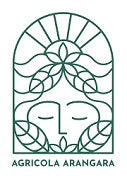Characteristics
Organic Calabrian Bergamot grows and bears fruit in only one place in the world, the Riviera dei Gelsomini . It is a narrow strip on the Ionian coast in the province of Reggio Calabria that was once Magna Graecia. Bergamot finds in these areas an ideal microclimate to produce fruit with unique characteristics. In fact, they are particularly rich in precious and fragrant essence of bergamot DOP, the main ingredient of the best perfumes in the world. In addition to this, which has been its main use for centuries, today it is a precious ingredient in the kitchen. In fact, for its particular and unmistakable aroma it has made inroads into many refined palates. Furthermore, it is also very rich in beneficial properties (antioxidants, cholesterol control).
Advice
Our Organic Calabrian Bergamot arrives on your table very fresh and lasts a long time (in the fridge up to 40 days). If you don't have space in the fridge, keep it away from heat sources, above all always be careful to consume the ripest fruits first. But if you don't want to consume the fresh fruits you can keep them even longer in the freezer. In fact you can squeeze the juice or cut it into slices or wedges.
For ideas on how to use it, check out the recipes on our blog to get inspired and learn about this fruit. You can make healthy juices, learn how to use it to enhance the flavor of sweet dishes (e.g. candied fruit , jams), savory dishes and an excellent digestive ( Bergamino )
The fruit
Bergamot has a more pronounced acidic flavour in the first fruits of the season, the early ones, picked while still green. As it ripens, the fruit becomes yellow and more pleasant to eat fresh.
The peel is calloused and thick and very rich in essential oils. For use in cooking it is necessary to remove the white part (albedo) which is rather thick and bitterish.
The pulp is white with some seeds. Very rich in juice.
Average weight: 200 - 220 g (about 5 bergamots for each kg)
Maturation period
The harvest lasts from October (early fruits) to January (ripe fruit)
Cherry
The word cherry refers to a fleshy fruit (drupe) that contains a single stony seed. The cherry belongs to the family Rosaceae, genus Prunus, along with almonds, peaches, plums, apricots and bird cherries. The subgenus, Cerasus, is distinguished by having the flowers in small corymbs of several together (not singly, nor in racemes), and by having a smooth fruit with only a weak groove or none along one side. The subgenus is native to the temperate regions of the Northern Hemisphere, with two species in America, three in Europe, and the remainder in Asia.
